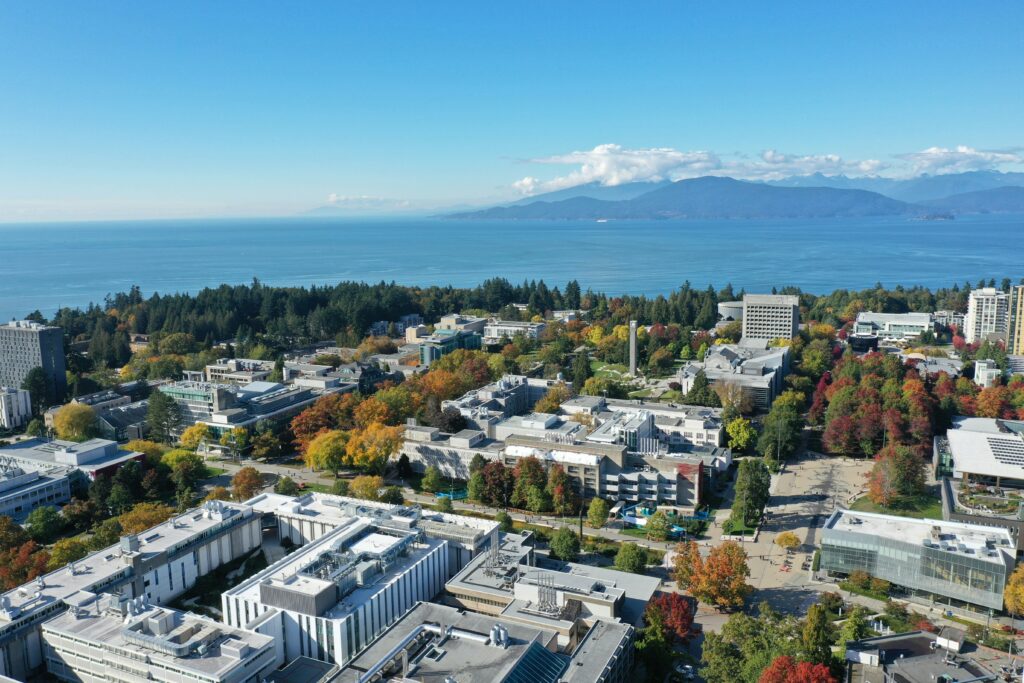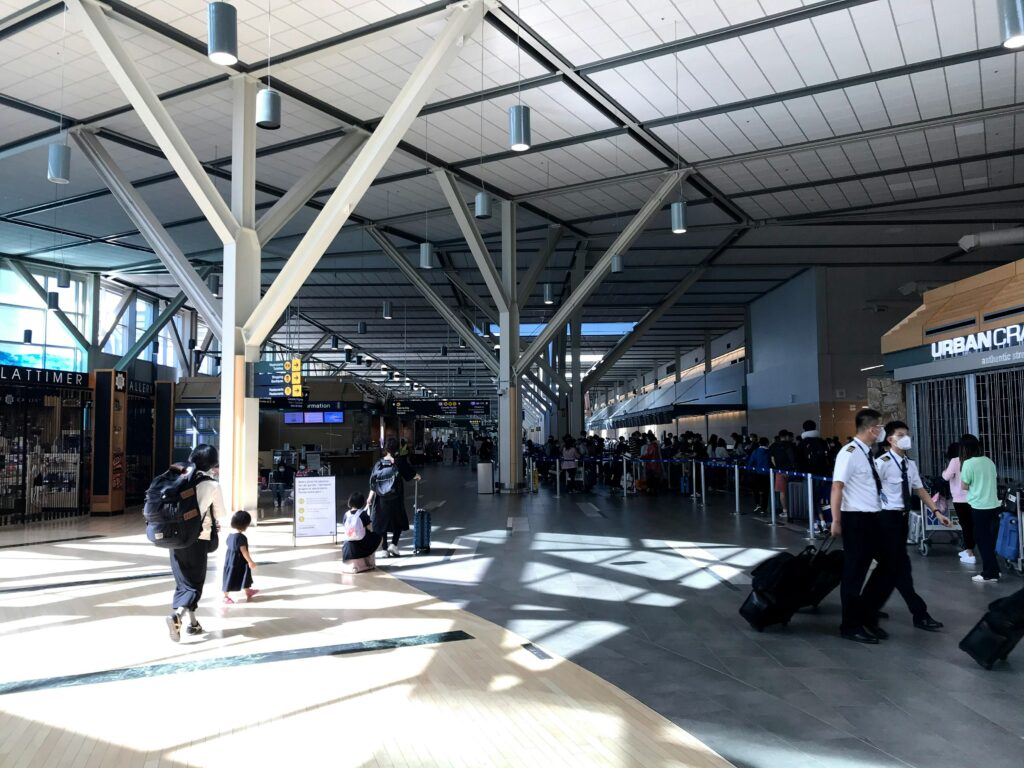A piece by Arash Malikzada
After years of ever increasing tuition hikes amidst a post-COVID-19 society (Baker 2021), working students have found themselves unable to live in financial security. Following a recent announcement (Carrigg 2024) by the administration at the University of British Columbia regarding an increase in tuition fees for both domestic and international students, other universities have followed suit. In particular, the student population at the University of Victoria have been hit especially hard following the school’s administration announcing that it too will be increasing tuition fees for domestic students by 2% annually and international students by 6.25% annually in accordance with the annual cap imposed by the government of British Columbia. Coupled with this increase in tuition fees, Immigration minister Marc Millar on 22 January 2024 announced a two-year cap on permits for international students (Smith Stone Walters 2024) as a first measure to combat the so-called “influx of international students has resulted in a severe shortage of apartments, causing a rise in rental prices, and placing added strain on healthcare and other essential services”. These measures imposed by the federal government to reduce immigration can be attributed to a report published by the National Bank raising the idea that Canada is caught in a so-called “population trap”, in which we are in “a situation where no increase in living standards is possible because the population is growing so fast that all available savings are needed to maintain the existing capital-labour ratio”(Singer 2024). All this to say, Canada’s population is growing faster than the economy can sustain (in particular, the housing market) which would lead to a deterioration of living standards over time. However, despite the amount of revenue international students bring to these post-secondary institutions, generating nearly 40% of all tuition fees across Canada (Government of Canada 2021), our federal government believe this proposal to reduce immigration to be a solution to all of the crisis we face under Canadian capitalism such as housing unaffordability and unemployment when in reality the real culprits are therefore not immigrants, but the source of those investments—the capitalists. That being said, these caps on immigration and tuition hikes will do nothing but harm the livelihood of students- especially working students who can hardly afford to pay for the food in their stomachs or clothes on their backs while the capitalists and landlords get richer and richer.
In post-secondary institutions, international students have become a critical source of funding, without which universities and colleges would be hard pressed to fund their operations. In British Columbia, post-secondary institutions now earn more revenue from international students from India than they do from the provincial government. This is the result of decades of underfunding by various levels of government for higher education, as well as these institutions’ ability to charge international students multiple times what domestic students pay in tuition. Moreover, a whole industry of “diploma mills” (Kanmodi 2020) have cropped up in recent years—post-secondary institutions which offer a dubious education but provide a possible pathway to citizenship or permanent residence. These institutions exploit the desire of international students to obtain Canadian credentials and eventually become permanent residents, often leaving students with significant debt and limited job prospects. Many international students are drawn to these diploma mills because of the perceived ease of obtaining a study permit and the promise of a pathway to Canadian citizenship without being indebted to the extremely high cost of tuition they are forced to pay at an acclaimed post-secondary institution. These diploma mills often advertise themselves as quick and easy routes to obtaining a Canadian education and, ultimately, permanent residency. However, the reality is often far from the promises made. Students who attend these diploma mills frequently find that the education they receive is substandard, with little to no support for their academic or career development. Despite paying high tuition fees, many of these students struggle to find meaningful employment after graduation, as their credentials are often not recognized by Canadian employers. This leaves them in a precarious position, saddled with debt and facing an uncertain future.

University of British Columbia (Vancouver) campus from above
In this investigative piece titled “The Shadowy Business of International Education” (Hune-Brown 2022) published on The Walrus, Hune-Brown details the inner workings of the international student recruitment industry revealing how students are often misled by agents into pursuing programs that offer little chance of future success, solely to meet immigration requirements.The article also exposes the financial motivations of universities and colleges, which increasingly rely on international student tuition for funding. The author examines the relationship between immigration policies and post-secondary education with a narrative approach through the eyes of Kushandeep, a student from the small village of Bibipur in Punjab studying accounting at the Kwantlen Polytechnic University. Students like Kushandeep have complicated the traditional perception of international students. The stereotype from the 2000s of wealthy foreign students, often from mainland China, driving luxury cars and shopping for designer goods between classes, was always an exaggeration. However, it is now completely disconnected from reality. In 2019, 34 percent of the over 642,000 international students in Canada were from India, surpassing China’s 22 percent. These students are propelling a booming international education sector, with their numbers tripling in the last decade. Canada now claims to be the third most popular destination for international study globally, trailing behind only the United States and Australia. Government announcements and reports proudly tout that foreign students contribute over $21 billion (Immigration, Refugees and Citizenship Canada 2024) to the economy annually—more than auto parts, more than lumber. These figures are the result of ten years of careful cultivation, marketing, and meticulously crafted government strategies. International students also reflect a system that has blurred the boundaries between immigration and education through an informal, makeshift arrangement designed to attract potential immigrants while avoiding responsibility for their settlement. This system is quietly reshaping postsecondary institutions, which have become reliant on revenue from foreign students and, by extension, on the opaque world of education agents who recruit them. It is a system that targets young people like Kushandeep from remote villages worldwide, taking their money and bringing them to campuses from rural Nova Scotia to suburban British Columbia, offering grand promises for the future but little concern for their actual well-being upon arrival. The article also exposes the financial motivations of universities and colleges, which increasingly rely on international student tuition for funding.
The COVID-19 pandemic has also had a significant impact on international students, including travel restrictions, changes to visa and immigration policies, and challenges related to online learning and remote study. Students from abroad who bring in an exorbitant amount in tuition fees for Canadian institutions often struggle to make ends meet working multiple jobs (CBC News 2020). Additionally, the transition to an online learning environment has posed challenges for many international students, who may face issues such as internet connectivity, time zone differences, and difficulty accessing support services. Moreover, the shift to online learning has resulted in a loss of the in-person interactions and support systems that many international students rely on, leading to feelings of isolation and disconnection. Travel restrictions have also had a significant impact on international students, many of whom have been unable to return to their home countries to visit family, contributing to feelings of homesickness and loneliness, particularly for students who are studying abroad for the first time. Furthermore, international students have faced tuition hikes during the pandemic, putting further strain on their finances.
While international students rake in billions to these post-secondary institutions, they continue to face extreme levels of exploitation through an extortionate amount in tuition fees and cost of living- of which international students can hardly pay for through their temporary work permits. Many are lured to Canada with promises of a better future, only to find themselves struggling to make ends meet, oftentimes turning to diploma mills for a chance to gain Canadian credentials and secure a pathway to permanent residency. These students are often forced to work long hours in low-paying jobs- sometimes in violation of their visa conditions- just to afford basic necessities. Despite their contributions to the economy and society, international students are the perfect scapegoat for the various crises we face under capitalism, including housing unaffordability, unemployment, and strain on social services. It is true that Canada has indeed witnessed a surge in immigration in recent years. In 2023, Canada’s population increased by a record 1.2 million people (Sarebrin 2024), most of which was made up of immigration. Total population numbers only tell part of the story. Canada admitted a record 800,000 temporary workers and international students—an increase of 50 per cent from the previous year alone. This influx of temporary workers and international students has contributed to the growth of various sectors of the Canadian economy, including healthcare, agriculture, and technology. However, despite their contributions, these individuals face precarious working conditions and limited access to social services.

The exploitation of international students is a critical issue that cannot be overlooked. Despite being gouged by these educational institutions during and after the COVID-19 pandemic, international students who have immigrated here on student or work visas are unfairly scapegoated. The idea that we are living in a “population trap” is the latest iteration of the blame game deflecting attention from the real culprits of the crises we are undergoing. The blame for Canada’s deteriorating living standards should stand squarely on the shoulders of the Canadian capitalists—not immigrants or international students. Instead of addressing the systemic issues of underfunding in education and exploitative practices, this narrative our politicians cooked up points fingers at international students, portraying them as a burden on the system when in reality, these students contribute significantly to our economy and enrich our academic institutions. It is time to debunk these myths and recognize the valuable contributions of international students to our society.
Works Cited
Baker, Rafferty. “UBC Students Frustrated by Proposed Tuition Increase While Classes Remain Online | CBC News.” CBCnews, CBC/Radio Canada, 28 Jan. 2021, www.cbc.ca/news/canada/british-columbia/ubc-tuition-increase-pandemic-1.5889339.
Carrigg, David. UBC to Hike Tuition Fees for 2024/2025 Academic Year | Vancouver Sun, vancouversun.com/news/local-news/ubc-to-hike-tuition-fees-for-2024-2025-academic-year. Accessed 9 Apr. 2024.
CBC News. “As International Students Struggle to Make Ends Meet, Universities Face Crippling Drop in Enrolment | CBC News.” CBCnews, CBC/Radio Canada, 7 May 2020, www.cbc.ca/news/canada/british-columbia/international-students-bc-covid-19-1.5557286.
Government of Canada, Statistics Canada. “International Students Accounted for All of the Growth in Postsecondary Enrolments in 2018/2019.” The Daily – , 15 Mar. 2021, www150.statcan.gc.ca/n1/daily-quotidien/201125/dq201125e-eng.htm.
Hune-Brown, Nicholas. “The Shadowy Business of International Education.” The Walrus, 29 May 2022, thewalrus.ca/the-shadowy-business-of-international-education/.
Immigration, Refugees and Citizenship Canada. “Changes to International Student Program Aim to Protect Students.” Canada.Ca, Government of Canada, 7 Feb. 2024, www.canada.ca/en/immigration-refugees-citizenship/news/2023/10/changes-to-international-student-program-aim-to-protect-students.html.
Kanmodi, Kehinde. “Diploma Mills.” Acta Medica Alanya, vol. 4, no. 2, 2020, pp. 205–06, https://doi.org/10.30565/medalanya.732803.
Serebrin, Jacob. “Statistics Canada Says Population Growth Rate in 2023 Was Highest since 1957 | CBC News.” CBCnews, CBC/Radio Canada, 27 Mar. 2024, www.cbc.ca/news/politics/population-growth-canada-2023-1.7157233.
Singer, Colin R. “Canada in a Population Trap, Say Bank Experts .” Canada Immigration and Visa Information. Canadian Immigration Services and Free Online Evaluation., 22 Jan. 2024, www.immigration.ca/canada-in-a-population-trap-say-bank-experts/.
Smith Stone Walters. “Canada: A Two-Year Cap on Foreign Students.” Smith Stone Walters, 4 Apr. 2024, smithstonewalters.com/2024/02/01/canada-a-two-year-cap-on-foreign-students/.

Leave a Reply
You must be logged in to post a comment.